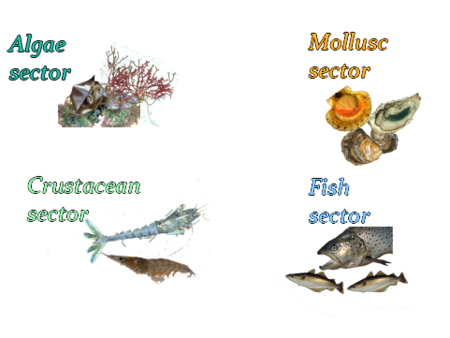General Introduction
World Aquaculture
by Jean Barret (Jean.Barret@ifremer.fr)
Our dossier on World Aquaculture includes :
- A short history of aquaculture (and its definition)
- The context: The place of aquaculture among aquatic resources
- Principal figures on European and World aquaculture
- A brief view of future prospects
But to begin with:
The realities of aquaculture In 1970, it was thought that aquaculture would resolve problems of famine in the world by providing low cost animal protein. Thirty-five years later, this activity represents close to 63 million tonnes (for all aquatic organisms), with a value higher than 78 billion dollars, and is principally done in Asia (91% of 2005 production). Although fresh water subsistence aquaculture feeds many local populations, marine aquaculture is an activity principally intended for export: generating jobs and high profits. Shrimp farming has thus been nicknamed ‘pink gold’ in Ecuador. But what about French aquaculture?
In the 1950s, with predictions of high world population growth and limited possibilities for further intensification of protein production in terrestrial systems (animal or vegetable), developed countries turned towards resources from the aquatic environment.
In 1955 these natural resources represented 55 million tonnes, which at that time appeared close to the maximum attainable. How could production be increased? One solution was the controlled rearing of certain species in aquatic environments. This is what we call aquaculture (after having also considered the term aquiculture). Teams were created in Japan, the United States and France (with the formation of the CNEXO at the end of the 1960s, which would later become Ifremer by its amalgamation with the ISTPM).
At the start of the 1970s, there was such hope in the development of these protein resources that it was said: “Aquaculture will allow us to solve the problems of famine in the Sahel”
What has become of that hope?

